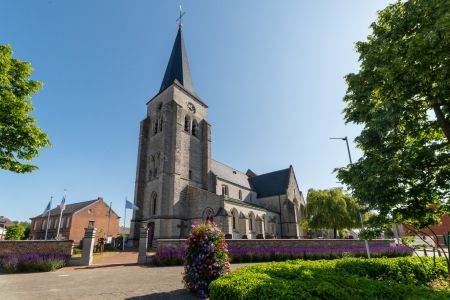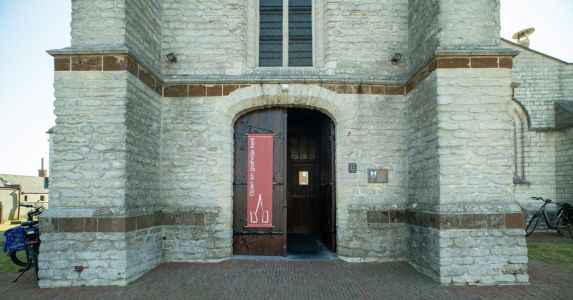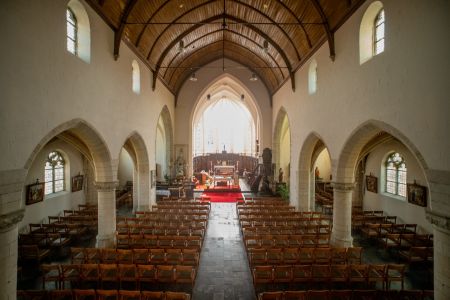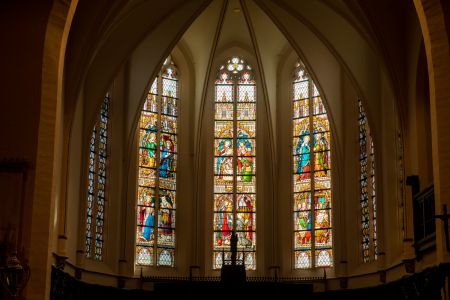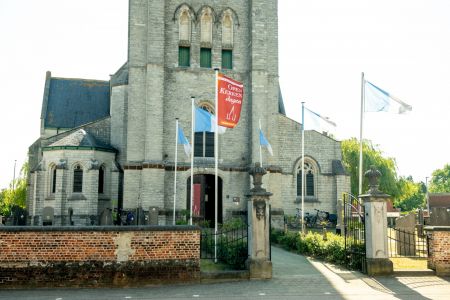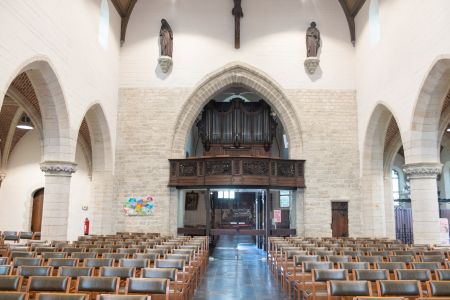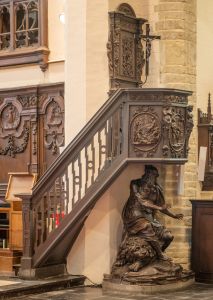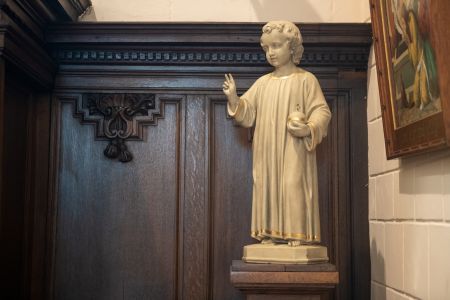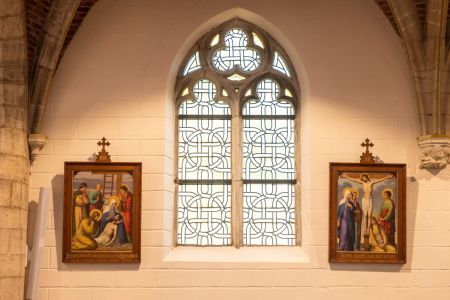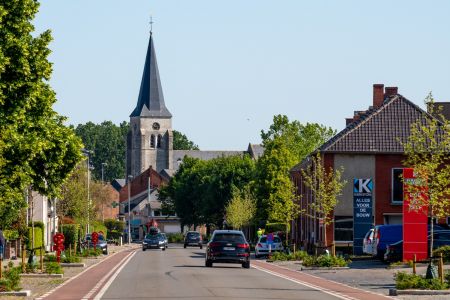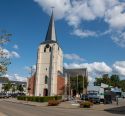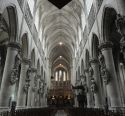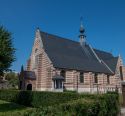Church | XV | Gothic | Catholic Church



Map
Opening hours
01 January - 31 December
Mon -
Tue -
Wed -
Thu -
Fri -
Sat 9.00 - 10.00
Sun -
En by appointment: kerk.hallaar@telenet.be
Religious offices
Description
In the church, there is a miraculous, clothed and kept statue of Mary with child. This statue is said to date from the 15th or 16th century.
The golden age of pilgrimage in the 17th and 18th centuries led to renovations and embellishments of the church, which was listed as a whole, together with the cemetery, in 1976.
KIKIRPA : photo-library online
Photos
Remarkable elements
Statue of Our Lady
A ‘miraculous’ statue with a famous legend attached to it through which Hallaar became a site of pilgrimage. The statue stems from the 15th-16th century and was originally a seated Madonna with child Jesus on her lap. In the 17th century, the statue was converted into a ‘Spanish’ standing Madonna.
The robes of Our Lady are exceptionally beautiful handmade pieces, the oldest dating back to 1780. Our Lady carries a ‘Flemish heart’ made from silver with Antwerp roses (pieces of roughly cut diamond), a jewelry piece typical for this region, and a rosary. Also the medallion that hangs from the scepter is a gift from 1854. Since 1962, a procession has been held each year in honor of Our Lady in the heart and center of Hallaar.
Retable of the main altar
The retable of the main altar in the choir is a creation by the hand of sculptor Jan Gerrits, made in oak, in neo-gothic style. It is crowned by the statue of Our Lady with child.
The intricate woodwork in the middle niche, depicts a calvary scene with the caption ‘Consummatum est’, which means ‘It is done’, the sixth of the seven last sayings of Jesus. The crucified Christ is depicted in between Saint John, his beloved student and Our Lady, while Mary Magdalene embraces his feet.
To the left and right one can see foreshadowing scenes from the Old Testament of the Sacrifice of the Cross: the sacrifice of Isaac and Melchizedek’s offer. The four evangelists are also depicted.
Stained glass windows
Stained glass windows and paneling of the choir and church. The three central stained glass windows consist of diverse scenes from the life of Mary from 1875 (the message that the Angel brought Mary and the Presentation of the Blessed Virgin Mary), the other stained glass windows date from 1904 and come from the Antwerp studio of Stalins and Janssens.
In the 17th century, the choir and the church interior got covered in oak paneling during the restoration of the paneling around 1850. The medallions that represent the fifteen mysteries of the rosary, were also added at this time. On the corbels around the choir, one can see various picturesque figures depicted on it: angels making music with vielle, harp, a transverse flute, violin, and lyre from the 15th and 19th century.
Pulpit
The pulpit with Saint Jerome was only installed at the beginning of the 19th century when the pulpit was ready and Saint Joseph’s altar was demolished. The shell with back panel is older and dates from the first half of the 18th century.
Plaster medallions attached to the shell depict scenes representing the ‘Sermon on the Mount’, the ‘Child Jesus between Joseph and Mary’, and ‘The calling of Saint Peter’. The shell is being carried by Saint Jerome seated on rocky soil and accompanied by a lion, his attribute. The base with the statue of Saint Jerome was created by Jan van der Neer in the beginning of the 19th century.
Retable of Saint Joseph
The side altar in the southern aisle is dedicated to Saint Joseph. At the centre of the retable from 1925, one can see a depiction of Joseph with the child Jesus. On the left panel, the marriage between Saint Joseph and Mary is depicted, on the right panel Joseph’s death.
Originally there stood an altar of the Holy Cross. The church that the Berthout family had founded here was originally dedicated to the Holy Cross. After the crusades in the Middle Ages, this devotion had become very popular. This retable stands on top of a monument for the fallen of the village of Hallaar who died in the First World War 1914-1918.
Confessionals (Our Lady on the south side, and The Good Shepherd on the north side)
The oak confessionals were originally built into the old wall paneling. They date back to the beginning 1700s in exuberant Baroque style. On the left door frame, one can see Saint Peter (keys) and to the right one can see King David with his harp.
The other beautiful confessional dates from the beginning of the 18th century, covered with Baroque style embellishments, the speech scroll ‘I am the Good Shepherd’ and on the door frames Mary and Joseph. This confessional was reserved for female churchgoers as they used to sit on the left side of the church.




